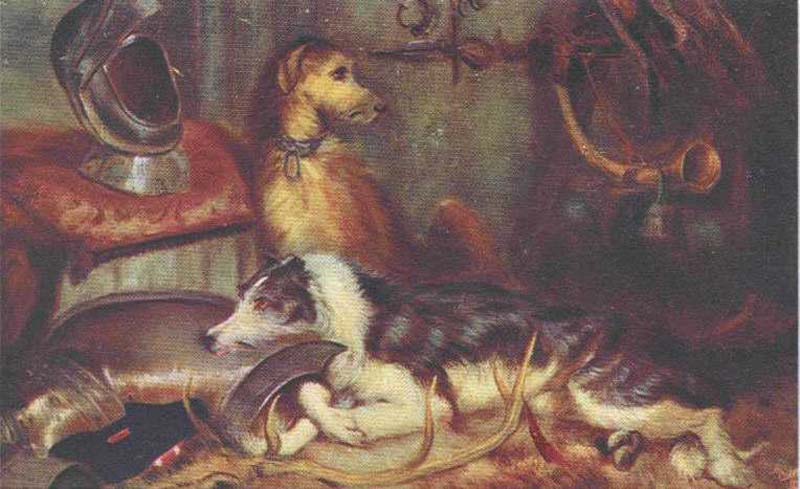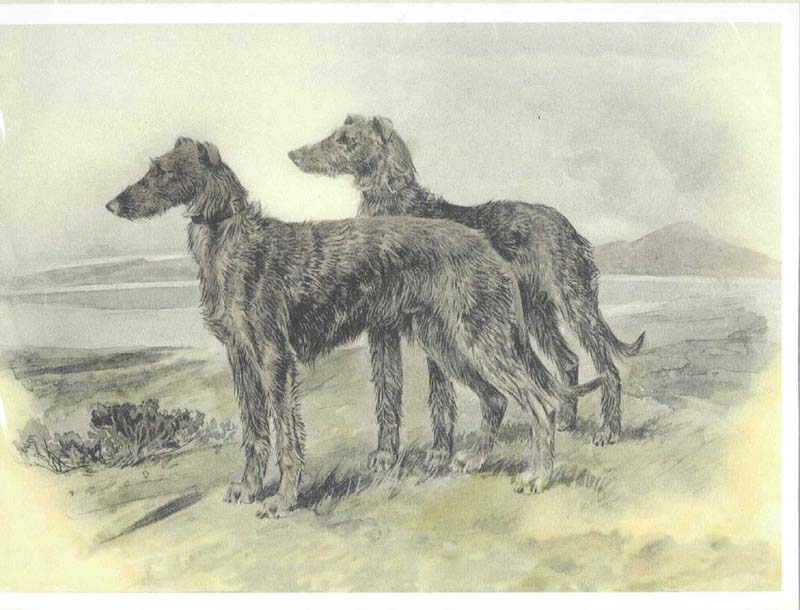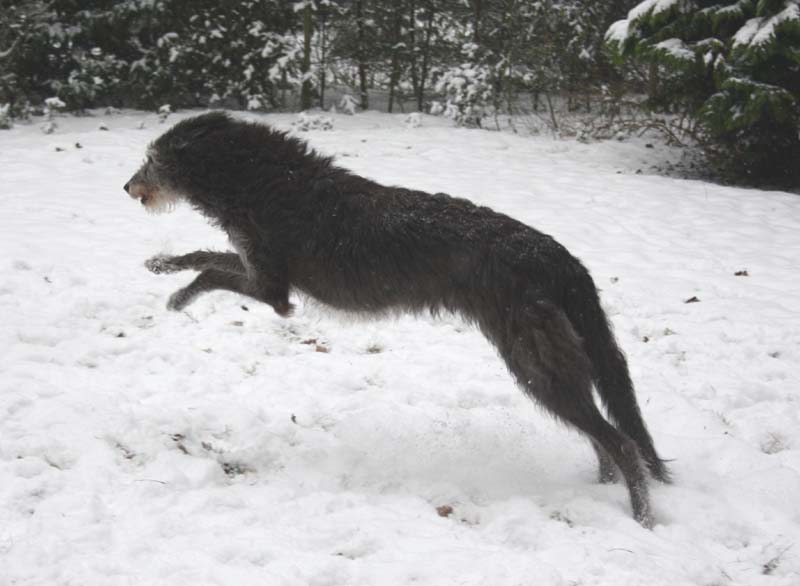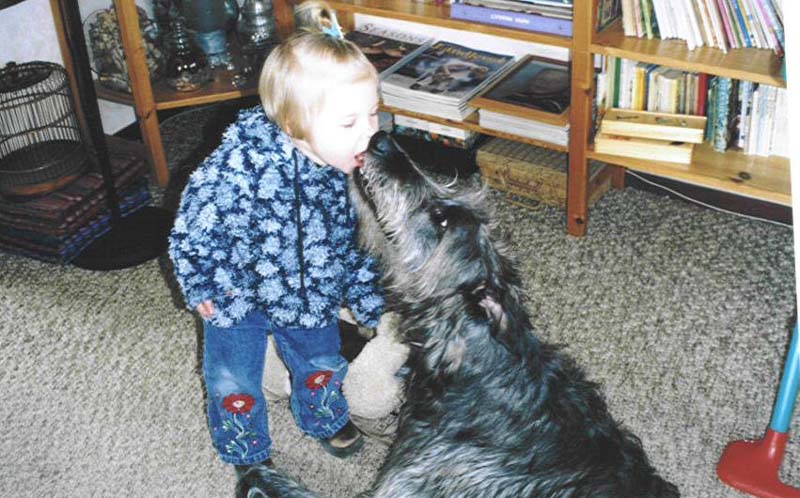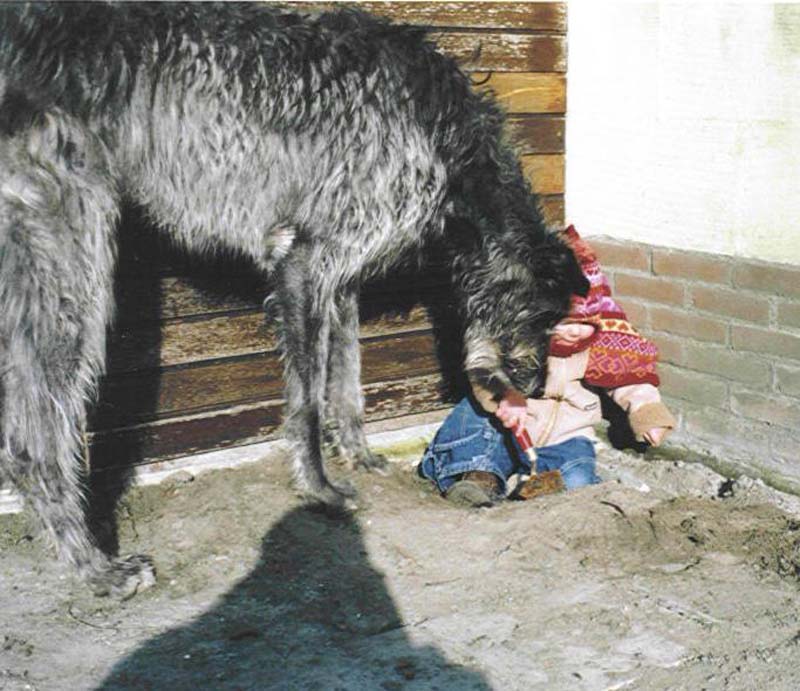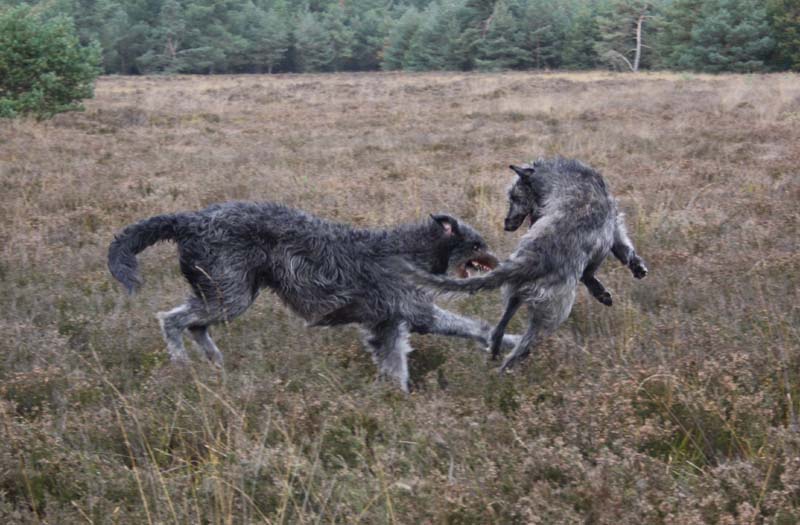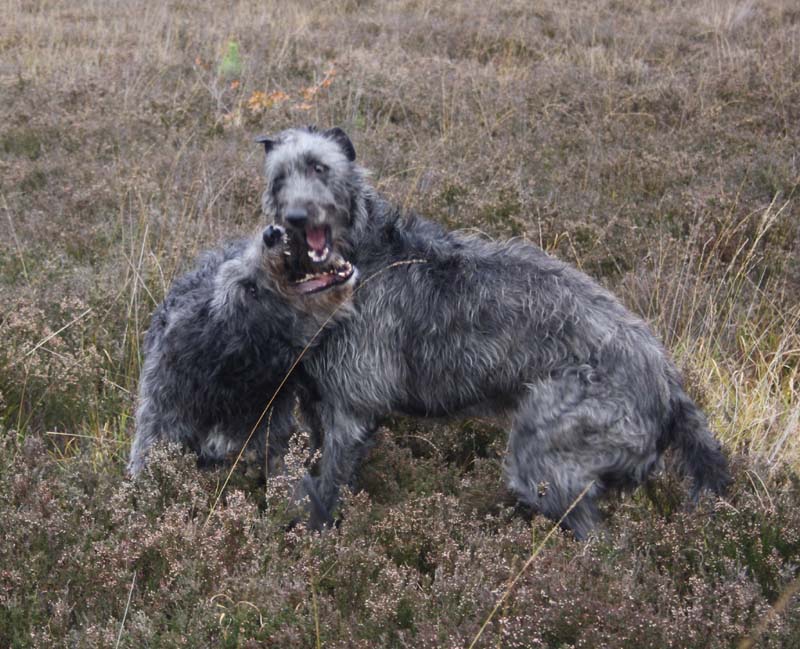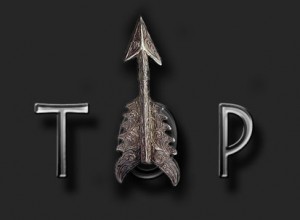 What and how is a Deerhound.
What and how is a Deerhound.
A good Deerhound always knows to arouse admiration, both by his imposing, noble and elegant appearance as well as by his intelligence and honest character.
We do not want to pay attention to the very interesting history of the breed, which can be found on many other sites that you can access through the links and in books.
We do want to tell you something about what and how a Deerhound is. It is our experience that we have from 1984 with Deerhounds. Every Deerhound is different, but most of them are recognizable for the experienced Deerhound enthusiast.
The Deerhound is therefore a sighthound, an independent hunter on the eye. He was originally used for hunting deer over very rugged and hilly terrain in Scotland.
Therefore he also has a wirehaired coat that is 8 to 10 cm. long and protects him from the inclement, wet Scottish climate and also gives him some protection against any injuries he might incur during hunting.
The physique and the head are slender, he has long, moderately angled front legs and well-angled hind legs, the tail is very long and the neck is graceful but very sturdy. The Deerhound does not have such a long neck as the Greyhound because the Deerhound has not been bred to pick up game from the ground, but to take down and kill a large deer. Therefore, too, the Deerhound must be large and powerful and can have a very good stamina. One of the most notable features is its rhythmic, flowing and dancing gait. The latter is because of the slightly more angled hindquarters and the clearly arched lumbar party, which is essential for effortlessly moving over hilly and rough terrain.
The Deerhound is one of the longest living large dogs.
A bitch can reach an age of 11 to 13 years and a male for 9 to 11 years. Not counting exceptions. Usually, the hearing, the sense of sight and smell of these elderly hounds is still very good.
It takes a long time before a Deerhound is mature, 3 to 4 years is normal but there are also those that are only “finished” at 5 years of age, especially the males.
Despite the fact that the Deerhound is a fair, gentle, intelligent and healthy dog, he is not very popular. Perhaps this is because of its dull, grey coat and because the other sighthounds have more imposing (Irish wolfhound), colour (Whippet), and/or a more attractive coat (Borzoi, Afghan).
The Deerhound has a nice “will to please” and is therefore very compliant. Some Deerhounds find it really nice to follow behaviour and obedience courses, others prefer to do coursing or track running. Because they are so obedient and easy to obey, you can let them go during a walk. They don’t walk away, and once they get behind a rabbit they mostly come back immediately when they lose sight of them.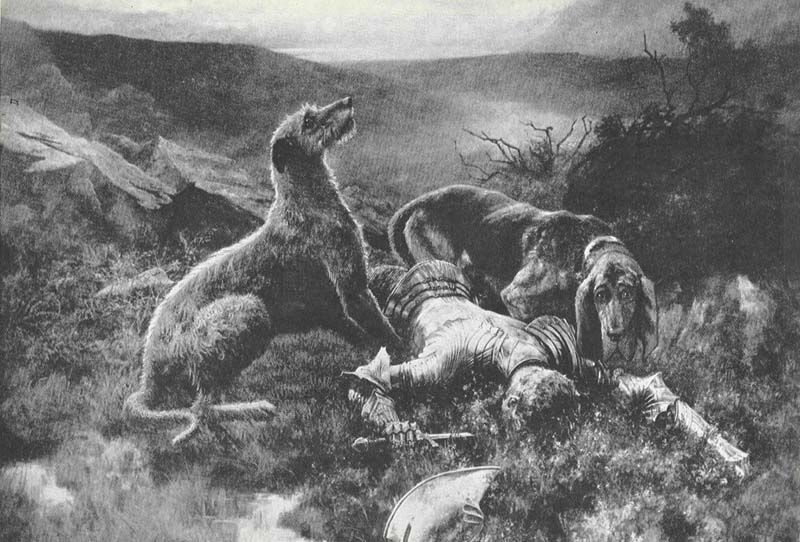
A Deerhound is a very emotional hound. He feels very good moods and atmospheres, but can also turn out very well to show how he feels.
Most of them are soon impressed by an angry voice, so heavy-handed punishment is really not necessary.
Deerhounds are not fighter bosses, even excessively dominant behaviour is already atypical because they are large enough and therefore do not have to impress. However, a young, slightly dominant male must be properly supervised, so that you can talk him past aggressive males, when he is a little bit older, without being ugly. Accepting aggressive behaviour is absolutely unacceptable, they are too big and too strong. Many people commit the mistake of not coaching a Deerhound because they are so sweet. It is thought that it all goes without saying, but just like an ordinary dog, a Deerhound should be educated to behave like a ‘real’ Deerhound.
In principle, the Deerhound is a very peace-loving hound and he is crazy with everything that lives in his surroundings. At a young age, they will come to everyone and everything to be petted. Because of their size, this may still cause problems because most people don’t see that it is a young dog. Make sure you are always around to tell this and to prevent your Deerhound from gaining a nasty experience.
They are also real children’s friends, even Deerhounds who have not grown up between children are very careful with them and will run away rather than growl against them.
Because the Deerhound is so high on its legs, it collects little dirt in his fur. Little dogs can be covered with dredge after a walk, at the Deerhound this only happens if you let two play in a plowed pasture, otherwise you only have a few dirty feet.
In the house they are very quiet. They are not nervous and do not run constantly behind you. They don’t bark, only if it’s really necessary or if they want to play. They also don’t ask for much space, despite their size they are able to wriggle in a small corner of the couch, they can roll up like a cat; with the tail over the nose.
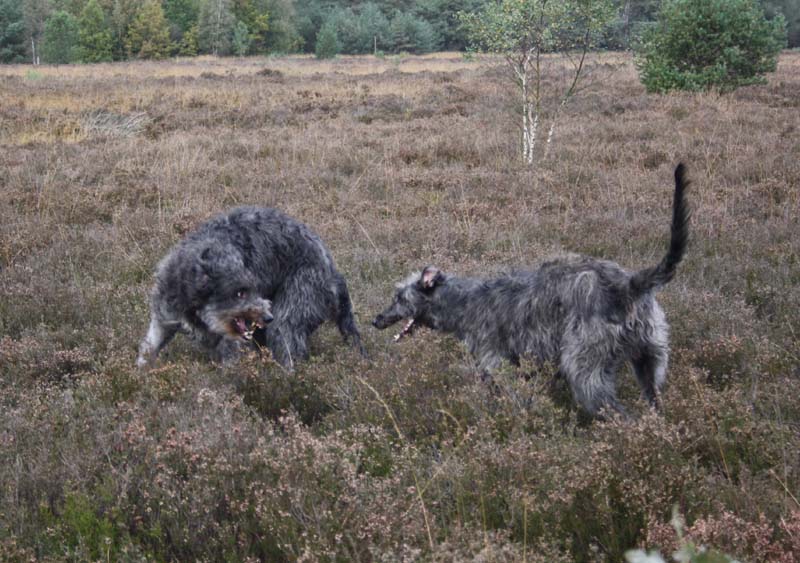
However, they need a lot of exercise, at least two hours a day and preferably free-movement so that they can fully enjoy themselves.
You can not offer this, do not take a sighthound.
It is said that youshould not look right in the eyes of a dog, that arouses aggression. It is also claimed that dogs like to eat large chunks of food. A Deerhound, however, is looking for eye contact and eats preferably small pieces, some hounds even finds a whole biscuit too big! Among others this shows that a Deerhound is not a common dog therefore I call them “Hounds”.
